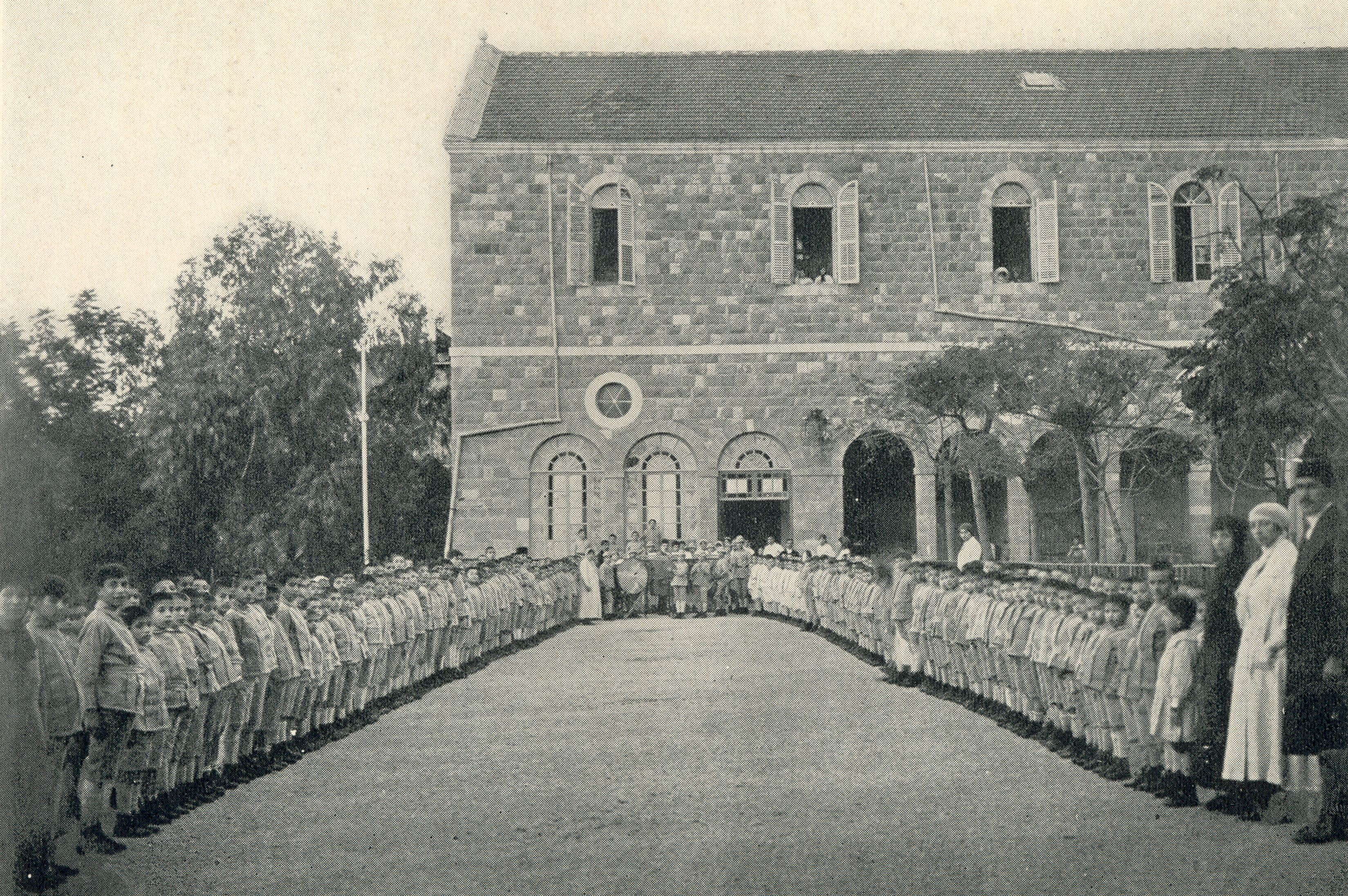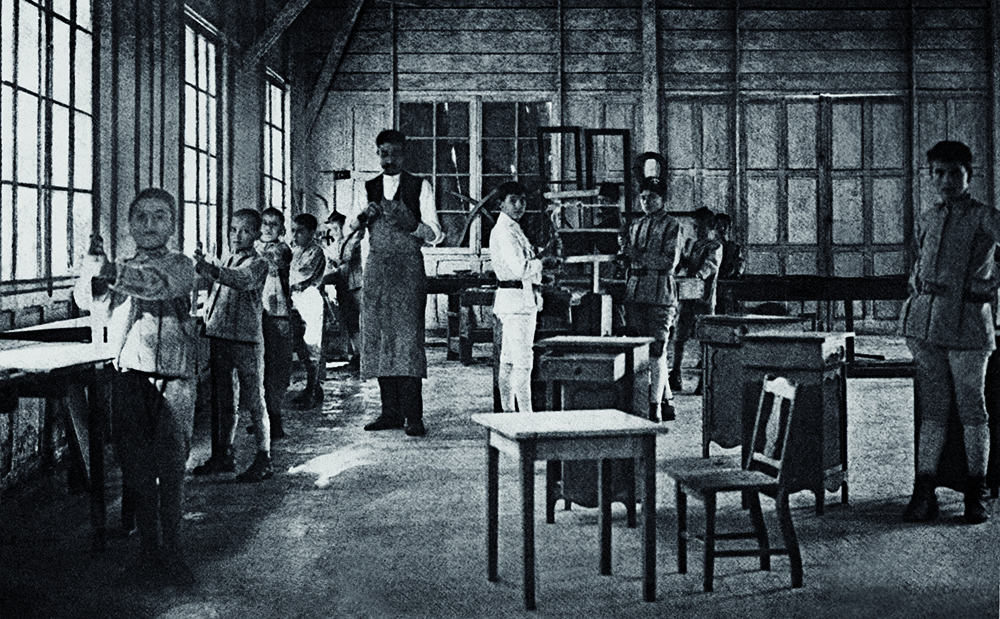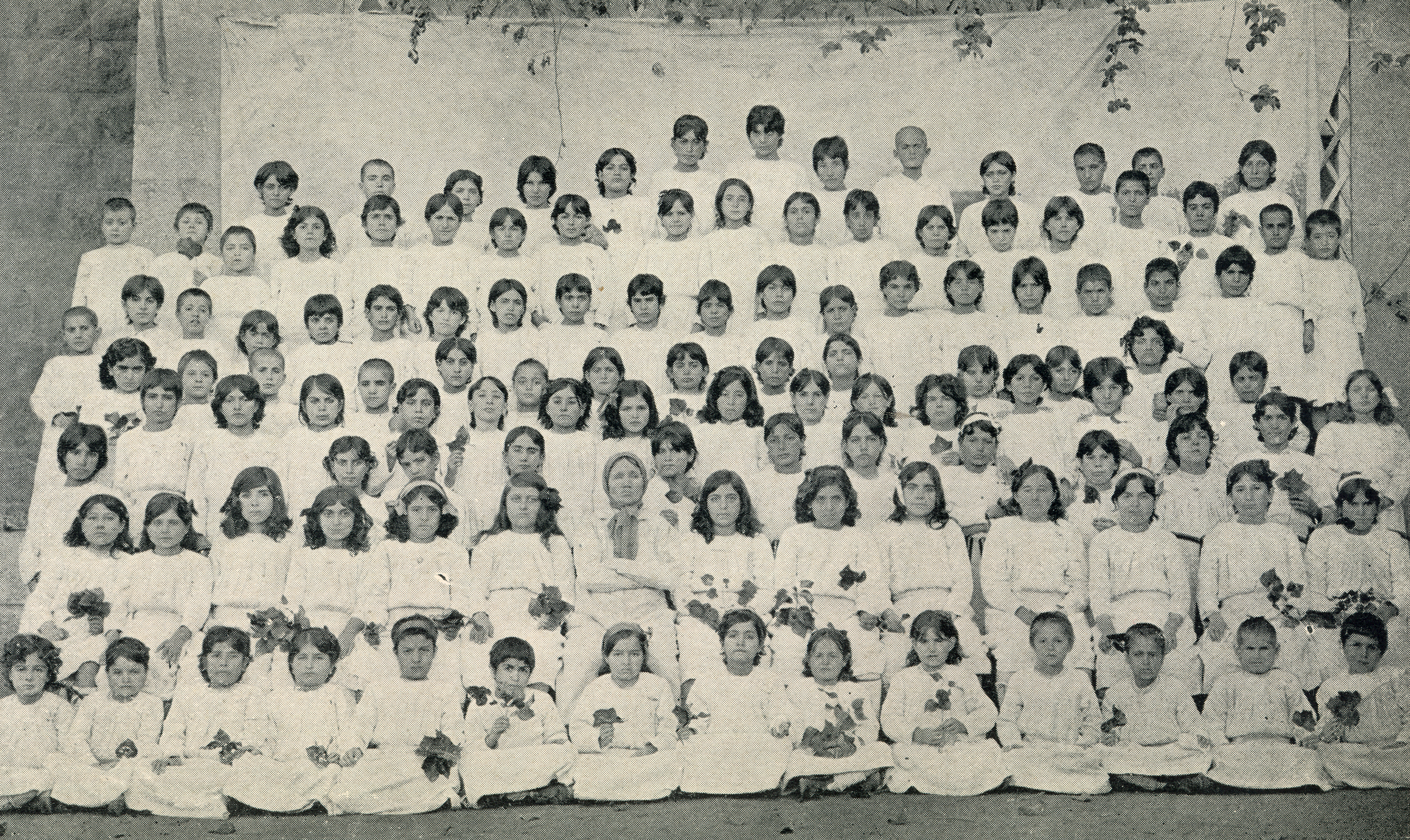05.02.2019
During the Armenian Genocide a list of sanctions and violence was put in action against the Armenian orphans in the Turkish orphanages. The conversion and renaming were carried out by forcible means. The first mandatory condition to enter the orphanage was renaming. Nearly all the orphans speak about this in their memoirs.
Garnik Banyan, who spent about three and a half year at the orphanage in Antura, tells in his memoirs, that in the orphanage he was given the number 549 and named Ahmed. Melkon Petrosyan, another inmate of the same orphanage was given the name Nejip and the number 8. Harutyun Alboyajyan was renamed twice. The first time it was in Dera, later in Antura, where he was named Shyuqru and given the number 534. Khoren Gelchyan was transferred from Aleppo to the Harbiye military central school in Constantinople. Here copper seals with their new Turkish names were distributed to the children. He got the seal named Ali Oghlu Islam, which should always have been hanged on the neck by the order of the directorate. Grigoryan from the orphanage of Mardin, who got the name Aishe, tells about the renaming ceremony: “Passports were made for all of us, where the father names of all of us were mentioned Abdulah, and the names of mothers - Salihè”. Ervand Postaljyan, who carried the name Mehmed Oghli and spent 6 years in the orphanage of Adana mentions in his memoirs: “In order not to forget our names, all of us carried our names written on the papers.”
The newcomers were divided into groups, and a corporal was assigned responsible for his group. They were trained for military service several hours a day. Any wrong step was punished by beating.
One of the strict sanctions imposed on children in the orphanage of Antura was Falakha (1). About imposed violence on children H. Alboyadjyan wrote; “If somebody spoke in Armenian, he was punished. Either they were beaten or forced to stand on the canteen and look at the sun for three or four hours”. Often children who escaped from the orphanage to forest for food were also imprisoned for 24 hours and were given nothing to eat; and during the dinner they were subjected to Falakha. A concrete "guideline" was used in the orphanage for the use of Falakha, where it was mentioned how many times for which "crime" the child should be subjected to Falakha.
Turkish "pedagogy" used all possible ways. During the lessons at Mardin's orphanage, noise caused the teacher to beat the children with a "blessing rod", and then bring children to the yard in a horrible cold, under the pretext of reading the names.
In that kind of orphanages the lessons of Islam were a must. Melqon Petrosyan presents some episodes from those lessons in his memoir. Speaking about Christianity Feizi Pasha mentioned: “My dears, your religion is as outdated, as worshiping fire, like your Jesus Prophet is outdated, when your t-shirts are old you just throw them and get the new ones”. In Mardin's orphanage, they learned compulsory chapters of Islam from the Koran, and parallel with it they learned to wash and pray in accordance with Islamic laws.
Circumcision also was mandatory in those orphanages. If the children were to admit and accept the fact of renaming or converting to Islam, then they vigorously opposed to the circumcision. In orphanages when the rumors about circumcision were spread, many boys fled. Yervand Postaljyan from the Adana Orphanage writes In his memoirs that the orphanage’s director issued a statement in the newspaper and urged the Turkish believers to be present at the orphanage ceremony of circumcising Armenian children. Khoren Gelchyan remembers, that all the Armenian children from their orphanage were taken to Constantinople by the order of the director and were circumcised.
Turkish leaders periodically inspected orphanages, which were always accompanied by celebrations and high applause. In the children's memoirs, this event has always been identified with delicious food, festive and fictively friendly atmosphere. Several times Djemal Pasha visited the orphanage of Antura, and Enver and Taliat visited the orphanage of Harbiè.
To decrease the number of children in the orphanages, they were sometimes also poisoned. Often the water was poisoned by throwing corpses into the water wells which supplied the orphanages. Poisoning cases in Mardin's orphanage were mainly related to the use of bread. At the end of 1918, Turkish staff at the Antura orphanage ordered the pharmacist Rayza Bey to poison all the orphans during the last meal, but But Reza Bey did not comply with the order. It is noteworthy that all the children sitting in the canteen remembered their Armenian names during Raza Bey survey.
Thus, the strategy of the Young Turks aimed at depriving the Armenian children of their own biological and racial attributes, identity, by gradually reshaping their identity. He consistently pursued this policy until the signing of the Mudros Armistice, and subsequently transferred Turkish orphanages to missionary, foreign and Armenian organizations.
The process of turkifycation of the Armenian orphans was carried out in several stages; the first was the issue of collection and transportation of orphans. The Ottoman government hurried to recruit them because they feared that missionary and benevolent organizations would succeed in that. With the second stage they concentrated the Armenian orphans in orphanages, and started the process of renaming and converting them. They preferred to call the children only by their numbers, depriving them not only of their national identity, but also their personality. There were cases, when in the absence of employees at the orphanage, the authorities removed the Armenian women working in the orphanage, fearing that their presence for the orphans could become a stimulus for Armenian self-consciousness.
The atmosphere of fear, the use of sanctions seems to succeed at first glance. orphans stop speaking Armenian, but in the memoirs, all the authors note that before sleeping they always crossed the pillow, repeating the "Lord's Prayer" which they had heard from their parents and sometimes, not remembering the prayer, they repeated their own names and the names of their loved ones in order not to forget.
During the implementation of this policy, the Turkish government always had some fears and was skeptical to Islamized Armenians. Let us note, that the order was issued from Constantinople to allow Islamization only after the approval of the central government, or only for the women who got married to Muslims. The process of Islamization was easier to control in the orphanages. However, this policy hadn’t worked long. In 1919, during the first six months of ceasefire, important measures were taken to return orphans. During the "gathering orphans", Armenian and international organizations were able to get out the orphans from the orphanages and save numerous Armenian children from Turkification. It should be noted, however, that a large part of younger children, who did not remembering their Armenian identity, and also those who preferred to keep silence about their Armenian identity were assimilated into the Turkish race in this way.
Narine Margaryan, Candidate of Historical Sciences and Senior Researcher of AGMI
1. During the Fallakha, they fasten the ropes to the ends of the stick, and hold the feet of the prisoner's hand between the stick and the string, then begin to rotate the stick, and the third person threw the punched one's legs to the foot of the pen until the blood comes from his feet.

The orphanage of Antura. In the central part is the music band of the Armenian orphans

The carpenter classroom of the orphanage of Anutura

The group of Armenian girls in the orphanage of Antura





